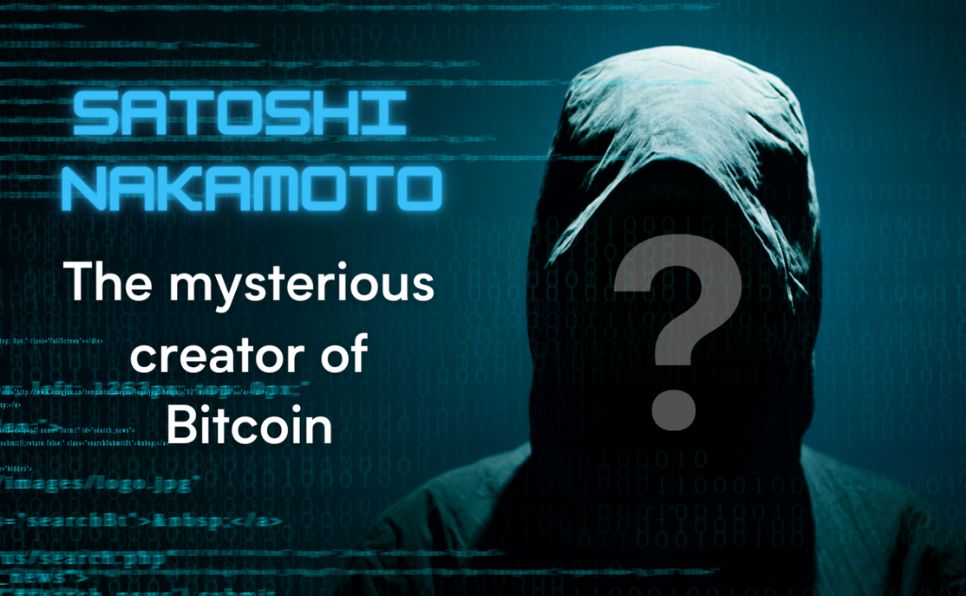Possibly one of the most intriguing things about Bitcoin is the story of its creation. In the center of it lies one of the biggest mysteries – who created it? No one knows for sure, but there are many theories about who it may be. Let’s dive into the story of the creation of Bitcoin and some of the most popular theories surrounding its creator.
Bitcoin’s Origin Story
On October 31st, 2008, a member of a cryptography mailing list named Satoshi Nakamoto published a whitepaper proposing a fully peer-to-peer electronic cash system that needed no third parties. This system was named Bitcoin. The white paper outlined the technical details and principles behind Bitcoin’s design, including the blockchain, proof-of-work consensus mechanism, and decentralized nature. While it initially garnered attention within the cryptography and cypherpunk circles, its influence expanded as more people became interested in the concept. Over time, as Bitcoin’s popularity grew, the white paper attracted attention from a wider range of individuals, including technologists, economists, and enthusiasts who were intrigued by the concept of a decentralized digital currency.
The early adopters and enthusiasts who read the white paper and understood its potential played a crucial role in driving Bitcoin’s initial growth and adoption. Their engagement and belief in the technology helped to spread the word, build communities, and lay the foundation for Bitcoin’s subsequent development and wider acceptance.
The first Bitcoin was mined on January 3rd, 2009, marking the beginning of cryptographic currencies, or cryptocurrency. The first mined Bitcoin, also known as the genesis block, holds a special place in the history of cryptocurrencies. It was mined by Bitcoin’s creator, Satoshi Nakamoto. This event marked the beginning of the Bitcoin network and laid the foundation for the entire cryptocurrency ecosystem that exists today.
The genesis block included a reward of 50 Bitcoins, which were generated through the process of mining.
- Mining is the computational process by which new Bitcoins are created and transactions are verified and added to the blockchain. The mining process involves solving complex mathematical problems using specialized hardware, and it serves the dual purpose of securing the network and distributing new coins.
The reward for mining the genesis block was significant at the time, as the value of Bitcoin was initially negligible. However, as Bitcoin gained popularity and its value increased over time, those 50 Bitcoins became extremely valuable. The transaction in the genesis block, which contained the newly minted coins, cannot be spent or transferred due to the way it was programmed. Therefore, those 50 Bitcoins are effectively locked and have never been spent or moved from the original address associated with the genesis block.
The first mined Bitcoin holds symbolic importance within the cryptocurrency community. It represents the birth of a decentralized digital currency and serves as a testament to the potential disruptive power of blockchain technology. The genesis block stands as a historical artifact, capturing the vision and ideals of Satoshi Nakamoto, and serves as a reminder of the revolutionary nature of Bitcoin’s inception.
Bitcoin and Satoshi became popular names in the cryptography scene, but then in April 2011, he vanished from the internet.
Theories of Satoshi’s Identity
The first theory is that Satoshi Nakamoto is a middle-aged man living in Japan, as evidenced by his profile information on the p2p Foundation’s forum. However, many people don’t believe this, since Satoshi has left some clues about his identity in his writing. For example, in the first Bitcoin block that was mined, he included the legendary message, “The Times 03/Jan/2009 Chancellor on brink of second bailout for banks”, which is a line from English newspaper Times of London. Additionally, Satoshi uses language like “maths”, “flavour”, and “flat” – commonly used by British people. While this definitely builds a case for Satoshi being British, it’s very possible that he used his language as a clever way to mask his identity even more.
The second theory is that Satoshi isn’t just a person, but a team of people. Due to the complexity of code and knowledge about economics, cryptography, and peer-to-peer networking, Satoshi is considered to be a world-class programmer. In an interview with The New Yorker in 2011, leading internet-security researcher Dan Kamisky tried to break Bitcoin’s code with a series of bugs and attacks, but was unsuccessful. According to Kaminsky, “Either there’s a team of people who worked on this,or this guy is a genius.” It’s very hard to tell whether Satoshi is an individual or a group, but the programming is impressive nonetheless.
A Case of Mistaken Identity
Newsweek announced in 2014 that they had identified Satoshi as a real person – a retired physicist in his 60s, Dorian Satoshi Nakamoto. When asked about his involvement in the creation of Bitcoin, he said, “I am no longer involved in that and I cannot discuss it. It’s been turned over to other people. They are in charge of it now. I no longer have any connection.” While it was exciting that the creator of Bitcoin had possibly been identified, it turned out to be another dead end. Dorian had thought the reporter asked him about a past project he worked on as an electrical engineer, and gave the aforementioned response. In December of 2014, he put out a final public statement denying all involvement in the creation of Bitcoin, and cited the amount of stress and confusion the citation had caused.
Why Protect His Identity?
Satoshi Nakamoto has good reason to keep his identity anonymous. The United States government has and will prosecute individuals who create a dollar competitor. The FBI has said that it is “a violation of federal law for individuals . . . to create private coin or currency systems to compete with the official coinage and currency of the United States.” Another reason Satoshi may want to remain anonymous is the large amount of Bitcoin he holds. It is estimated that Satoshi owns about 1 million Bitcoin, worth about 20 billion dollars at today’s prices.
Anonymity allowed Nakamoto to shift the spotlight away from themselves and instead focus attention on the technology and the merits of Bitcoin. By avoiding personal recognition, Nakamoto encouraged the crypto community to focus on the decentralized nature of the new system and its potential to transform the long standing financial systems in place. Anonymity also allowed Nakamoto to foster a sense of collective ownership and responsibility within the Bitcoin community. Without a single identifiable leader, the community was encouraged to contribute to the development and promotion of Bitcoin, making it a truly decentralized and community-driven project. It has also allowed Bitcoin to evolve and thrive as a decentralized, global digital currency without being dependent on the actions or reputation of a single individual.
Will We Ever Know?
Unfortunately, it’s very likely that the world will never know the true identity of Satoshi Nakamoto. Part of the excitement about Bitcoin is about the mystery of its creation, and how it came to be. Whether we know Satoshi’s identity or not, Bitcoin still stands as the first cryptocurrency and will likely be around for a long time.
People are naturally drawn to mysteries, and the search for Nakamoto’s true identity has become a subject of intense interest and investigation. This curiosity has helped to keep Bitcoin and its origins in the public eye, generating ongoing discussions and media coverage. The fact that Bitcoin was launched by an anonymous individual or group enhances its reputation as a truly decentralized and unbiased system. Without a known founder or leader, Bitcoin’s development and operation have been driven by a community of contributors, adding to its perceived fairness and trustworthiness. The mystery of Nakamoto adds a symbolic dimension to Bitcoin’s narrative in this way. It reinforces the notion that Bitcoin is a revolutionary technology designed to challenge traditional financial systems and empower individuals. The mystery behind its creation also aligns with the idea of a borderless digital currency that operates independently of governments and institutions. Bitcoin’s success and widespread adoption have not relied on the reputation or influence of a specific individual. The absence of a central authority or identifiable leader has allowed Bitcoin to remain resilient and resistant to censorship, regulation, or external pressures. The decentralized nature of Bitcoin, exemplified by its anonymous inventor, has been a significant factor in its ability to persist and thrive.
By diverting attention away from the identity of the creator, the mystery of Bitcoin’s origin has allowed the focus to remain on the technology itself. This emphasis on the merits of the blockchain technology and its potential applications has been instrumental in driving adoption and fostering innovation within the cryptocurrency space.
While the mystery of Bitcoin’s creator may have initially sparked curiosity and intrigue, it is important to note that Bitcoin’s success ultimately rests on its underlying technology, its utility, and the collective efforts of its community. The mystery has played a role in shaping Bitcoin’s narrative and capturing public imagination, but its long-term success is rooted in the real-world applications and benefits it offers as a decentralized digital currency.




